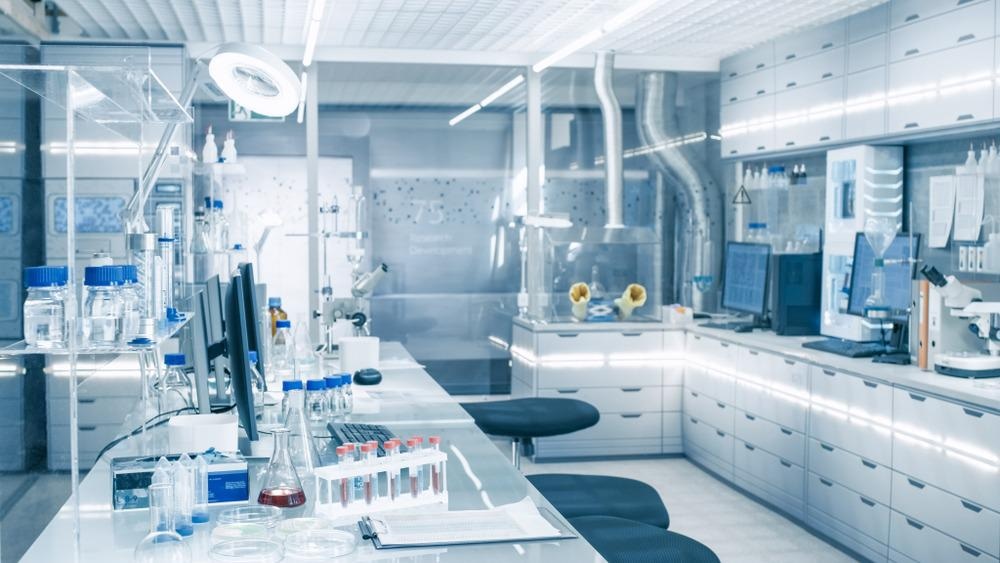
Image Credit: Gorodenkoff/Shutterstock.com
A team of scientists in California has proposed a methodology for the reconstruction of one-dimensional surface slope profiles using a spatial frequency range where the measurement instrument’s limited resolution has confounded the raw data.
The technique developed by the team will likely be essential to furthering advanced surface slope profilometry and provides a rare opportunity to enhance the lateral resolution of the metrology data required for optical fabrication and usage of optics, as well as for simulating new X-ray beamlines.
Enhancing Surface Slope Metrology
The use of X-rays has been intensely developed in numerous applications since their discovery by Röntgen in 1895. In 1949, W. Ehrenberg of Birkbeck University, London, highlighted that "The study of surfaces by X-ray reflection is of interest by itself, but it may not be easy to improve optical surfaces to such an extent as to reduce appreciably the stray light near an X-ray optical focus”. Scattered light, at this time, limited the capabilities of X-ray technology. There was a strong need for a method of characterizing surface finish that was rapid, non-contact, and utilized visible light.
Over the years, optical profilers have been developed that can reliably measure the surface roughness of optical surfaces, and the limitations of such methods are well understood. Additionally, there has been much work to enable scientists to measure slope error directly to further enhance X-ray technology. Most metrology laboratories ensure X-ray mirrors perform as intended using a figure-profiling machine to establish slope profilometry. Recent advancements in optical design and analysis have pushed slope profilometry accuracy to below 100nrad (Nanoradian).
A team of scientists at Lawrence Berkeley National Laboratory, Berkeley, Rochester Scientific LLC and aBeam Technologies Inc., all based in California, have further advanced surface slope metrology. In their paper, published in 2020 in the journal Review of Scientific Instruments, they describe how they established a data reconstruction procedure that significantly improves the accuracy of surface slope metrology with the Optical Surface Measuring System (OSMS) over 1.6 mm to 7 mm (wavelength range).
Establishing New Methods for the Reconstruction Surface Slope Profiles
In their paper, the US team demonstrates analytical, experimental, and numerical methods for the reconstruction surface slope profiles. The team specifically investigated the range where raw data is disturbed by the limited resolution of the instrument. They used the instrument’s transfer function (ITF) to characterize a profiler’s spatial resolution properties.
To obtain precise ITF measurements, the team applied a newly established method that uses test surfaces with one-dimensional chirped height profiles. The team were able to determine the parameters of an analytical model for the ITF based on the ITF calibration.
In the current study, slope metrology data was obtained from the OSMS. The size of the AC light-beam-collimating aperture limited the spatial resolution of the OSMS, therefore, the study equipped the OSMS with a circular aperture measuring 2.5 mm in diameter - which is the typical arrangement for AC-based slope profilers used for surface slope metrology.
The team used two state-of-the-art elliptically shaped X-ray focusing mirrors and established its surface slope metrology to provide evidence that developed data reconstruction procedure could enhance the accuracy of surface slope metrology with the OSMS over a wavelength range of 1.6 mm to 7 mm.
The amplitude of the quasi-periodic error characteristic for the deterministic polishing process increased by a factor of 2, in comparison to rough metrology data. The team concluded that underestimations of surface slope errors within this specific wavelength range were responsible for significant errors in the expected performance of X-ray mirrors. This error was particularly susceptible when using coherent X-rays, where perturbations can result in greater intensity variations.
Conclusions and Future Directions
The California-based team provided evidence to demonstrate that underestimations in surface slope errors impact beamline performance.
The team believes that its findings provide an opportunity to enhance the lateral resolution of surface slope metrology, which could be leveraged to improve fabrication and optimal usage of the optics for the simulation of new beamlines.
To gain a full understanding of how surface slope errors influence performance, further testing is required and will be explored in future projects.
The team is currently planning to conduct a Phase II project to investigate an expansion of the approaches and software that were developed for Phase I of the project. Upcoming work will explore two-dimensional data, such as that provided by instruments such as Fizeau interferometers and interferometric microscopes.
References and Further Reading
Ehrenberg, W., 1949. X-ray Optics: The Production of Converging Beams by Total Reflection. Journal of the Optical Society of America, 39(9), p.741. https://www.osapublishing.org/josa/abstract.cfm?uri=josa-39-9-741
Yashchuk, V., Rochester, S., Lacey, I. and Babin, S., 2020. Super-resolution surface slope metrology of X-ray mirrors. Review of Scientific Instruments, 91(7), p.075113. https://aip.scitation.org/doi/full/10.1063/5.0005556
Aschenbach, B., 1985. X-ray Telescopes. Reports on Progress in Physics, 48,579-629. https://iopscience.iop.org/article/10.1088/0034-4885/48/5/001/pdf
Disclaimer: The views expressed here are those of the author expressed in their private capacity and do not necessarily represent the views of AZoM.com Limited T/A AZoNetwork the owner and operator of this website. This disclaimer forms part of the Terms and conditions of use of this website.